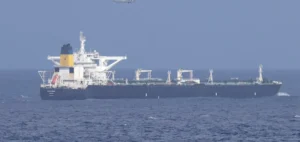The European Commission announced Monday, August 4, the six-month suspension of its 93 billion euro counter-tariff measures that were set to take effect August 7 against the United States. This decision comes as Brussels and Washington work to finalize the terms of their trade agreement reached July 27 between Ursula von der Leyen and Donald Trump. Commission spokesperson for trade Olof Gill confirmed that the European Union (EU) was continuing negotiations with the United States to finalize a joint statement, while emphasizing that this suspension aimed to restore stability and predictability for citizens and businesses on both sides of the Atlantic.
The framework agreement provides for a single 15% tariff on most European goods exported to the United States, notably including the automotive sector which sees its customs duties reduced from 27.5% to 15%. This measure nevertheless represents a substantial increase from the average rate of 1.2% in effect before the Trump presidency. The aerospace sector and certain chemical products benefit from exemptions, while tariffs on steel and aluminum remain at 50%.
Major economic impact on both economies
Economic projections reveal significant consequences for both trading blocs. European gross domestic product (GDP) is expected to contract by 0.3% while the American economy could suffer a more marked decline of 0.7% in a scenario without a final agreement. Germany, Europe’s leading export-dependent economy, faces an anticipated contraction of 0.4% of its GDP. American households will bear an average additional cost of $1,300 in 2025, with particularly pronounced price increases in clothing (+38%), automobiles (+12% or $5,800 more per new vehicle) and food (+3.3%).
The employment impact also appears concerning with a potential loss of 497,000 jobs in the United States by the end of 2025 and an unemployment rate increase of 0.7 percentage points by the end of 2026. Ireland appears as the most vulnerable European country in terms of employment, followed by Italy, particularly exposed in the transport and fashion sectors.
Colossal financial commitments and European divisions
The agreement includes massive financial commitments from the EU: $750 billion in purchases of American energy products (liquefied natural gas, oil and nuclear fuels) spread over three years, as well as $600 billion in additional investments in the United States by 2028. These amounts raise questions about their feasibility, as the EU has no authority to compel private companies to make such purchases. The European Commission has moreover emphasized the political and “not legally binding” nature of this agreement.
Divisions among member states remain palpable. While Germany favors a quick agreement to protect its automotive industry, France strongly criticizes the “unbalanced” nature of the deal. French Prime Minister François Bayrou called the agreement a “dark day” for Europe, accusing Brussels of having yielded to the American president. The Netherlands adopts a pragmatic position while Italy considers the 15% rate “sustainable” for its economy.
Strategic sectors under high tension
The pharmaceutical sector, representing $127 billion in American imports from the EU in 2024, remains in uncertainty with an ongoing Section 232 investigation that could result in additional tariffs. This situation generates potential costs of $100 million per day in new tariffs for American companies. Ireland finds itself particularly exposed, with pharmaceutical exports representing 55% of its total exports to the United States. Popular weight-loss drugs like Ozempic and Wegovy, using semaglutide produced by Novo Nordisk, are among the potentially impacted products.
The European automotive industry faces considerable challenges despite the obtained tariff reduction. Manufacturers BMW, Mercedes-Benz, Volkswagen and Volvo, which generate a significant share of their sales in the United States, will have to absorb substantial additional costs. The machinery and equipment sector, including $37 billion in imported medical instruments, also remains under pressure.
European retaliation arsenal on hold
Brussels maintains a substantial arsenal of retaliatory measures in reserve. Beyond the 21 billion euros in countermeasures suspended until August 6, the Commission has prepared a second series of tariffs targeting 72 billion euros worth of American products, including 11 billion euros in aircraft and parts, as well as emblematic products like bourbon, jeans and Harley-Davidson motorcycles. The anti-coercion instrument, considered the EU’s commercial nuclear option, remains on the negotiating table with growing support from member states for its potential deployment.
The American executive order of July 31 confirming the application of the 15% tariff from August 8 establishes that this rate includes existing most-favored-nation rates, thus avoiding tariff stacking beyond the 15% ceiling. This measure offers immediate tariff relief compared to the duties announced on April 2, but nevertheless represents a historic increase in the average American effective tariff rate to 18.3%, the highest level since 1934.
Negotiations continue in a context where the American trade deficit with the EU reached $235.6 billion in 2024. Uncertainties persist notably on the concrete implementation modalities of European financial commitments and the actual duration of the agreement beyond the initial six-month suspension. The risk of Chinese export diversion to the European market and increased fragmentation of global supply chains add additional complexity to the transatlantic trade equation.






















